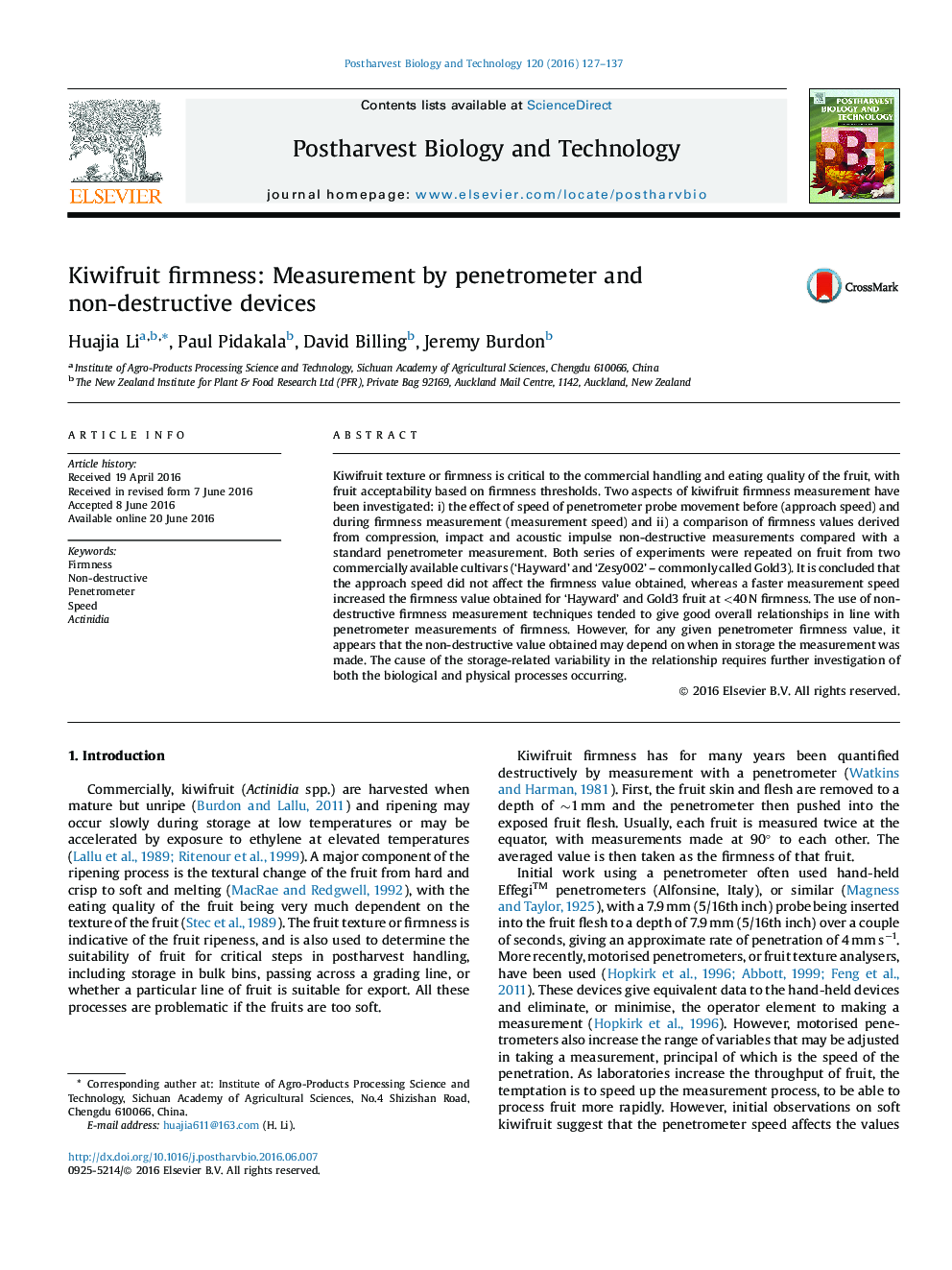| Article ID | Journal | Published Year | Pages | File Type |
|---|---|---|---|---|
| 4517735 | Postharvest Biology and Technology | 2016 | 11 Pages |
•Penetrometer measurement speed can significantly affect the firmness value obtained.•The effect of measurement speed is greatest for fruit <40 N.•Penetrometer approach speed does not affect the firmness value obtained.•Non-destructive devices gave good overall relationships with penetrometer data.•Storage time affects the non-destructive device/penetrometer firmness relationships.
Kiwifruit texture or firmness is critical to the commercial handling and eating quality of the fruit, with fruit acceptability based on firmness thresholds. Two aspects of kiwifruit firmness measurement have been investigated: i) the effect of speed of penetrometer probe movement before (approach speed) and during firmness measurement (measurement speed) and ii) a comparison of firmness values derived from compression, impact and acoustic impulse non-destructive measurements compared with a standard penetrometer measurement. Both series of experiments were repeated on fruit from two commercially available cultivars (‘Hayward’ and ‘Zesy002’ – commonly called Gold3). It is concluded that the approach speed did not affect the firmness value obtained, whereas a faster measurement speed increased the firmness value obtained for ‘Hayward’ and Gold3 fruit at <40 N firmness. The use of non-destructive firmness measurement techniques tended to give good overall relationships in line with penetrometer measurements of firmness. However, for any given penetrometer firmness value, it appears that the non-destructive value obtained may depend on when in storage the measurement was made. The cause of the storage-related variability in the relationship requires further investigation of both the biological and physical processes occurring.
